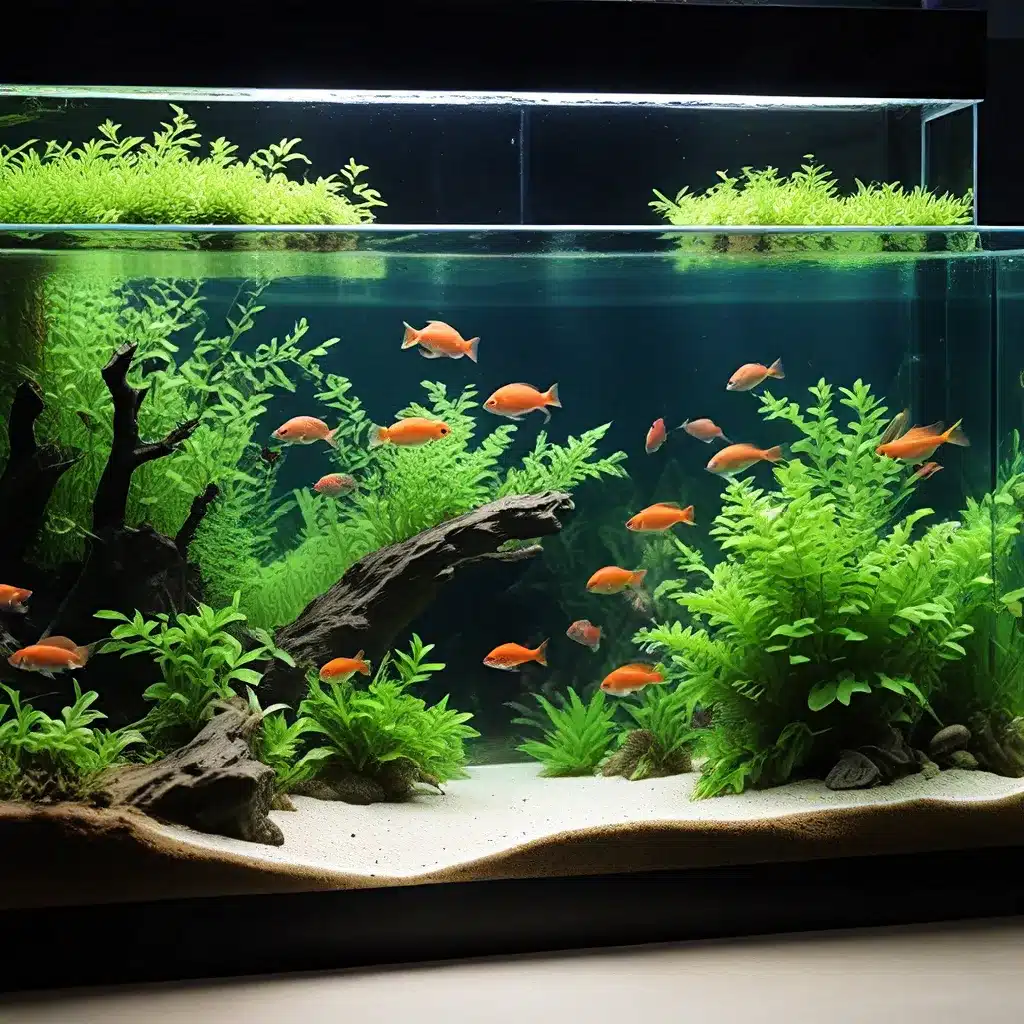
Embracing Eco-Friendly Aquarium Keeping
As the global focus on environmental sustainability intensifies, aquarium hobbyists and enthusiasts are increasingly seeking ways to reduce the ecological impact of their beloved underwater habitats. In this comprehensive guide, we’ll explore a range of sustainable aquarium practices that not only benefit the health and well-being of your aquatic inhabitants but also minimize your carbon footprint.
From innovative filtration systems to thoughtful plant selection and water management strategies, discover how you can transform your aquarium into a self-sustaining oasis that aligns with the principles of eco-friendliness. Whether you’re a seasoned aquarist or just starting your journey into the captivating world of aquarium keeping, this article will equip you with the knowledge and techniques to create a stunning, yet environmentally conscious, underwater ecosystem.
Aquarium Filtration: The Key to Sustainable Water Management
Efficient filtration is the cornerstone of any successful and sustainable aquarium. By choosing the right filtration system, you can not only maintain optimal water quality but also reduce your energy consumption and minimize waste. Let’s explore some eco-friendly filtration options:
Mechanical Filtration: Mechanical filters, such as sponge filters or hang-on-back designs, are effective at trapping solid waste and debris without relying on energy-intensive components. These filters can be easily cleaned and reused, reducing the need for frequent filter replacements.
Biological Filtration: Establishing a thriving biological filtration system is crucial for breaking down waste and maintaining a balanced aquarium ecosystem. Consider using media like ceramic rings or bio-balls, which provide a large surface area for beneficial bacteria to colonize and effectively convert harmful ammonia and nitrites into less toxic nitrates.
Chemical Filtration: Activated carbon and other chemical filtration media can remove dissolved organic compounds, tannins, and discoloration from the water, improving overall clarity and quality. These filters can be regenerated or replaced as needed, minimizing waste.
By combining mechanical, biological, and chemical filtration methods, you can create a comprehensive, low-impact system that keeps your aquarium clean and healthy while reducing your energy consumption and waste output.
Sustainable Aquascaping: Integrating Nature-Inspired Designs
Aquascaping, the art of arranging aquatic plants, rocks, and hardscapes to create visually stunning underwater landscapes, can also be approached with sustainability in mind. Here are some eco-friendly aquascaping techniques to consider:
Native Plant Selection: Prioritize the use of native aquatic plants that are well-suited to the specific environmental conditions of your aquarium. These plants are often more resilient, require less maintenance, and can thrive without the need for excessive fertilizers or CO2 supplementation.
Low-Tech Setups: Embrace the beauty of low-tech aquascaping, which focuses on natural, low-maintenance materials and minimizes the use of energy-intensive equipment. This approach can include the use of soil-based substrates, low-light plants, and passive water circulation methods.
Closed-Loop Systems: Explore the concept of closed-loop aquaponics systems, where aquatic plants and fish work in harmony to create a self-sustaining ecosystem. In these setups, plant growth helps to remove excess nutrients, while the fish provide a natural source of fertilizer, reducing the need for external inputs.
By embracing sustainable aquascaping techniques, you can not only create visually stunning aquariums but also minimize your environmental impact and promote the overall health of your aquatic inhabitants.
Water Conservation and Waste Reduction
Effective water management is crucial for maintaining a sustainable aquarium. Here are some strategies to reduce your water consumption and waste output:
Partial Water Changes: Adopt a regular routine of partial water changes instead of complete water changes. This helps retain beneficial bacteria and minerals while minimizing the amount of new water needed to maintain water quality.
Automated Top-Off Systems: Install an automated top-off system to replenish water lost due to evaporation, reducing the frequency of manual water changes and the associated waste.
Wastewater Recycling: Explore options for recycling aquarium wastewater, such as using it to irrigate outdoor plants or incorporating it into a closed-loop aquaponics system.
Minimizing Waste: Reduce the amount of aquarium waste, such as excess fish food and plant trimmings, by carefully monitoring feeding schedules and thoughtfully managing your aquatic flora.
By incorporating these water conservation and waste reduction strategies, you can significantly lower your aquarium’s environmental impact while maintaining a thriving and visually appealing underwater habitat.
Embracing Renewable Energy Sources
To further enhance the sustainability of your aquarium, consider integrating renewable energy sources into your setup. Solar-powered aquarium equipment, such as LED lights and water pumps, can dramatically reduce your energy consumption and carbon footprint.
Advancements in aquaculture technology, like energy-efficient filtration systems and automated monitoring tools, are also paving the way for more sustainable aquarium practices. By staying informed about these innovative solutions and incorporating them into your aquarium setup, you can align your hobby with the principles of eco-friendliness.
Remember, the path towards a sustainable aquarium is a journey, and even small changes can make a significant impact. By embracing these sustainable practices, you not only contribute to the health and well-being of your aquatic ecosystem but also set an example for the wider aquarium community.
Conclusion: A Greener Aquarium, a Healthier Planet
As aquarium enthusiasts, we have the power to make a difference in the world around us. By adopting sustainable aquarium practices, we can reduce our carbon footprint, minimize waste, and promote the long-term viability of our beloved underwater havens.
Through thoughtful filtration, eco-friendly aquascaping, water conservation, and the integration of renewable energy sources, we can create aquariums that not only captivate our senses but also align with the principles of environmental sustainability. By sharing our knowledge and inspiring others to follow suit, we can collectively contribute to a greener, more resilient aquarium community.
Remember, your aquarium is not just a hobby – it’s a reflection of your commitment to the natural world. Embrace these sustainable practices and let your aquarium be a shining example of how we can coexist with nature in harmony. Visit King Aquarium to explore a wide range of eco-friendly aquarium products and resources to help you on your journey towards a sustainable aquarium.

